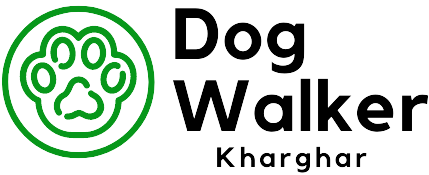Understanding Dog Aggression and How to Manage It
Dog aggression is a common behavioral issue that pet owners may face. By understanding its causes and learning how to manage it, you can help your furry friend lead a happier, healthier life. In this blog post, we’ll explore why dogs become aggressive, the signs of aggression, and some practical tips to help you address this behavior.

What Causes Dog Aggression?
There are several reasons why dogs may display aggressive behavior. Some common factors include:
- Fear: When a dog feels threatened or afraid, it may react aggressively to protect itself. This is often referred to as fear aggression.
- Pain: If a dog is in pain or discomfort, it might become irritable and aggressive. Pain-included aggression is common in dogs with medical issues or injuries.
- Territoriality: Dogs are naturally territorial animals, and they may become aggressive if they feel their space is being invaded.
- Resource guarding: Dogs can become aggressive when they feel the need to protect their food, toys, or other valued possessions.
- Social aggression: Some dogs may display aggression in social situations, particularly if they haven’t been properly socialized with other dogs or humans.
Signs of Dog Aggression
It’s essential to recognize the signs of aggression in your dog, so you can intervene before the situation escalates. Some common indicators of aggressive behavior include:
- Growling or snarling
- Baring teeth
- Stiffening of the body
- Raised hackles (the fur along a dog’s spine)
- Lunging or snapping
- Biting
It’s important to remember that not all aggressive behaviors are the same. Some dogs may display warning signs before becoming aggressive, while others may attack with little to no warning. Always be cautious and take any signs of aggression seriously.
How to Manage Dog Aggression
If you suspect your dog is displaying aggressive behavior, it’s crucial to address the issue as soon as possible. Here are some steps you can take to manage and prevent dog aggression:
- Consult a professional: If you’re unsure how to handle your dog’s aggression, consult a veterinarian or a professional dog trainer. They can help you identify the cause of the aggression and provide tailored advice on how to manage it.
- Socialize your dog: Proper socialization is key to preventing many forms of aggression. Expose your dog to various situations, people, and other animals from a young age to help them feel more comfortable and confident in different environments.
- Establish a routine: Dogs thrive on routine, and providing a consistent schedule can help alleviate anxiety that may contribute to aggression. Set aside regular times for feeding, walks, and play to help your dog feel secure.
- Use positive reinforcement: Reward your dog for non-aggressive behaviors and avoid punishing them for aggression, as this can make the problem worse. Instead, reinforce good behavior with praise, treats, or toys.
- Create a safe space: Provide your dog with a designated area where they can retreat if they feel stressed or overwhelmed. This can be a crate, a separate room, or a designated corner in your home.
- Consider medication: In some cases, medication may be necessary to help manage your dog’s aggression. Talk to your veterinarian about whether this is a suitable option for your pet.
Preventing Dog Bites
Preventing dog bites is a priority when dealing with an aggressive dog. Here are some tips to help keep you, your dog, and others safe:
- Never approach an unfamiliar dog or a dog that is displaying signs of aggression.
- If your dog is aggressive, inform others and consider using a muzzle when in public.
- Teach children how to interact with dogs safely and to recognize the signs of aggression.
- If a dog appears to be aggressive, remain calm and avoid making sudden movements or loud noises.
- If you are bitten by a dog, seek immediate medical attention.
Final Thoughts
Understanding dog aggression and taking steps to manage it can help ensure a happier, healthier life for your pet. By recognizing the signs of aggression, addressing the underlying causes, and implementing appropriate management strategies, you can create a safer environment for both your dog and those around them. Don’t hesitate to seek professional help if you’re struggling to manage your dog’s aggression, as early intervention can make a significant difference.
